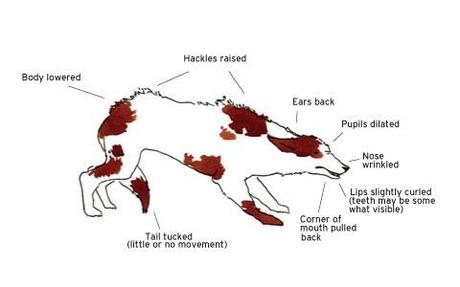Dogs employ a vast range of facial expressions, vocal sounds and body postures in order to communicate. May owners talk to their dogs, and sometimes the two parties appear to understand each other. Dogs possess a large universal vocabulary, and some people have attempted to translate what they are saying. You can also learn to recognize some of what your dog is communication if you watch, listen, learn and understand carefully.
It helps to first learn about the various components that make up dog body language. Dogs use facial expressions, ear set, tail carriage and overall demeanor to signal their intentions and feelings to others. Breaking their body language down into components is helpful at first for building your observation and interpretation skills. Your goal, however, is to be able to observe the entire dog and the situation or context he’s in, in order to accurately determine what he’s trying to say. It’s not possible to understand your dog’s feelings and intentions by looking at just one aspect of his body language. - source
So, how to read your dog’s body language? It’s easy enough to deduce when the dog’s happy or playful. Hence, here’s the top three negative dog body language that you need to pay extra attention to.
1. Aggresive

This is a deliberate display of strenght and the “adversary” is being given the change to back down, but any retreat must be slow and obvious to avoid an attack. This expression is designed to show the dog’s impressive weaponry, his teeth. The lips are drawn up as far as they will go, which means that the corners of the mouth are brought forward rather than drawn back as in a fearful dog.
2. Fear-aggression

- image source
This is the face of fear and defensive aggression. The ears are back and the mouth is wide with worry. However, the lips are drawn slightly up to expose the teeth, the head is up ready to bite and the eyes are fixed on the antagonist so that further aggressive action can be taken if necessary. This face is accompanied by a series of explosive barks designed to make the aggressor move away.
3. Uneasy

- image source
This dog’s body stance and posture shows that he is scared and very uneasy with nowhere to hide or feel really safe. He is waiting miserably for better options to become available, his ears lifted to alert him to the tiniest sound indicating what is to happen next.

